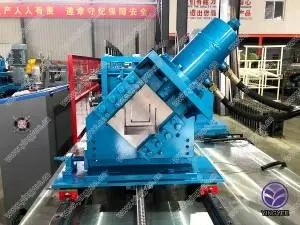
The Process and Importance of Sandwich Panel Production
Sandwich panels have become an integral part of modern construction due to their exceptional thermal insulation properties, lightweight nature, and cost-effectiveness. These panels consist of two outer layers, typically made of steel, aluminum, or other materials, with an insulating core, often composed of polyurethane, polystyrene, or mineral wool. In this article, we will explore the production process of sandwich panels and their significance in various applications.
Production Process of Sandwich Panels
The production of sandwich panels involves several critical steps to ensure quality and performance. The first step is the selection of raw materials. The choice of outer layers and core material directly influences the panel's strength, insulation properties, and durability.
Once the materials are selected, the production process begins with the preparation of the core material. The core needs to be cut and shaped to the desired thickness, which typically ranges from 30 mm to 200 mm, depending on the application. After preparation, the core material is subjected to a foaming process if polyurethane or polystyrene is used. This involves mixing specific chemicals that react to form a rigid foam that will serve as insulation.
Following the preparation of the core, the outer layers are fabricated. The metal sheets are often coated with protective substances to prevent corrosion. This coating is essential, especially in environments prone to moisture and heavy weather conditions. Once the outer layers are ready, the next step involves bonding the outer layers to the core material.
The bonding process is crucial, as it ensures that the layers adhere firmly to one another, providing structural integrity to the sandwich panel. Various bonding methods can be employed, including mechanical fastening, adhesive bonding, or even a combination of both. Adhesives, such as polyurethane or epoxy, are commonly used because they provide excellent shear strength and thermal compatibility.
After bonding, the panels are cut to size using precision cutting tools to ensure accurate dimensions. The finished panels undergo quality control checks to test for strength, insulation efficiency, and surface quality. This step is vital to ensure that the panels meet industry standards and customer specifications.

Finally, the sandwich panels are packed and prepared for shipment
. It’s essential to handle them carefully during transportation to prevent any damage that could affect their performance.Importance of Sandwich Panels
Sandwich panels are widely used in various construction projects due to their numerous advantages. One of the primary benefits is their insulation properties. The insulating core minimizes heat transfer, making sandwich panels an ideal choice for energy-efficient buildings. This thermal insulation leads to reduced energy costs for heating and cooling, which is particularly important in regions with extreme climates.
The lightweight nature of sandwich panels means they require less structural support, resulting in lower construction costs and faster installation times. This efficiency is appealing for both commercial and residential projects, allowing builders to adhere to tight schedules.
Furthermore, sandwich panels are available in a variety of finishes and colors, enhancing the aesthetic appeal of buildings. The outer metal layers can be coated with different finishes, providing options for customization that meet the design requirements of any project.
In addition to their architectural uses, sandwich panels are also utilized in industries such as refrigeration, cold storage, and even in the manufacturing of portable buildings. The versatility and robustness of these panels make them suitable for various applications, ranging from industrial facilities to agricultural structures.
Conclusion
The production of sandwich panels is a complex process that requires careful selection of materials and precise manufacturing techniques. As energy efficiency and sustainable construction practices continue to gain importance, sandwich panels will play a vital role in modern architecture. Their combination of durability, insulation, and lightweight properties allows them to meet the demanding needs of today's construction projects while also contributing to environmental sustainability. With ongoing advancements in materials and production methods, the future of sandwich panels looks promising, driving innovation and efficiency in the building industry.